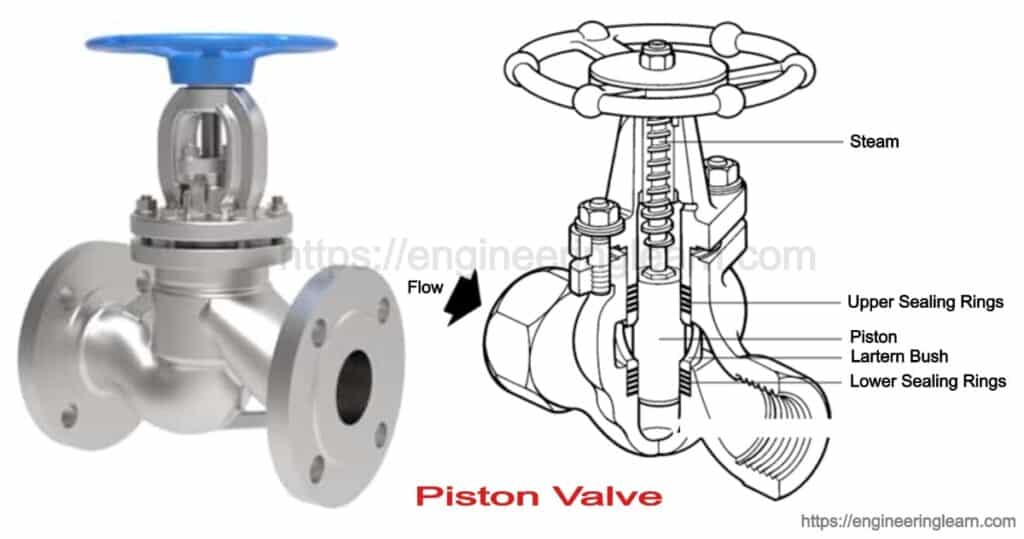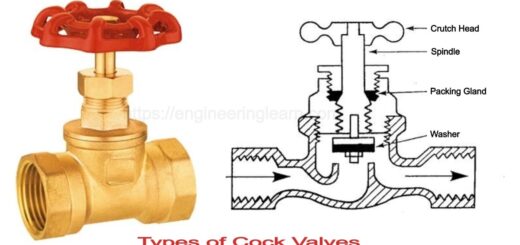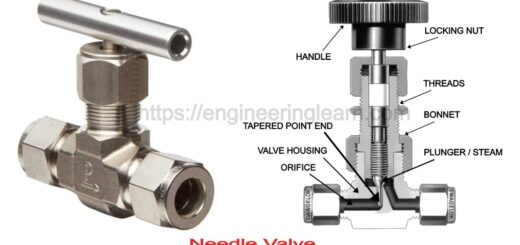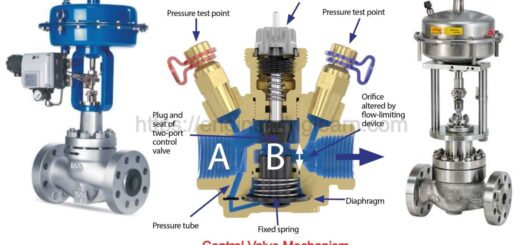Piston Valve: Types, Mechanism, Purpose, Design & Advantages

What is Piston Valve?
Piston Valve: Types, Mechanism, Purpose, Design & Advantages :- A piston valve is a flow regulating device which is used to control the flow of fluid inside the pipeline. It is generally applied in the case when either fully open or fully close operation of a fluid is required, such as water pipeline. The partial opening can also be done but this will create a huge amount of turbulence which may ends up damaging the valve sealings.
Generally, the piston valves are operated manually but some times it is also actuated electrically or hydraulically, depending upon the requirement.
The piston valves are generally not designed for the partial opening conditions; it must be used in fully opened or fully closed portion. In the fully opened condition, only bottom surface of the valve comes in contact with the flowing fluid and rest of the valve body is protected by the upper sealing of the valves. This function not only increases the valve life but also make it safe from the erosion from the flowing fluid, consequently, the valve remains leak proof after a long term use.
Design of Piston Valve
The piston valve generally consists of two sealings to avoid the leakage that is, upper and lower sealing rings that are held in place by lantern bushings. As, the valve opens the piston side wall comes in contact with the upper sailings and preventing leakage throughout the valve stem and bonnet. As, the valve closes, the bottom surface of the piston comes in contact with the lower sealing rings and thus create a leak proof packing of the fluid inside the pipeline.The pistons are designed so that they can have only linear motion; up and down motion, and do not rotate with the rotation of the hand wheel.
Although the piston of the valve goes fully upward in open condition and let the fluid move linearly, but due to sharp edges of the piston and irregularity in pipe geometry at the valve zone, turbulence occurs which causes loss of fluid energy in the pipeline.
Manufacturing of Piston Valves
The sealing of the valve are manufactured by different types of flexible materials, but in general reinforced graphite or sometimes rubber or PTFE sealing rings are also used in the system. The sealing rings are known as the heart of the piston valve. To avoid the corrosion of piston, different grades of stainless steels are used to manufacture the piston as per application and working environment.
Types of Piston Valves
1. Single and Double Actuation Piston Valves
There are ‘N’ numbers of piston valves available in the market, which can be categorized on the basis of actuation mechanism, piston arrangements, piston design and working requirements. On the basis of actuating mechanism, the valve can be categorized as manual, electrical and hydraulic type. But, in general, manual operation is preferred the most.
There can be two different types of piston arrangement done in the piston valve; single actuating piston and double actuating piston. In single actuating piston the only one piston is operated to perform the closure or opening of the fluid flow. In this case, the piston moves upward to open the flow and downward to close the flow.
In double actuating piston two pistons are present, opposite to each other, such that the bottom flat face of piston is facing each other. To open the flow, both the piston moves backward and the gap is created for the fluid flow whereas to close the flow, each piston moves towards each other and after establishing the complete contact the fluid flow is completely closed. The single actuating piston valve is generally operated manually whereas the double operating piston valve is operated automatically.
2. Regulating and Normal Piston Valves
As per the piston design the piston valve is categorized into two categories- regulating type and normal type. The normal type of piston valve consists of a piston which is having flat bottom face whereas the regulating type piston which consists of a piston with inclined bottom face. This inclination gives throttling effect to the flowing fluid and helps in regulating the fluid with minimal losses.









